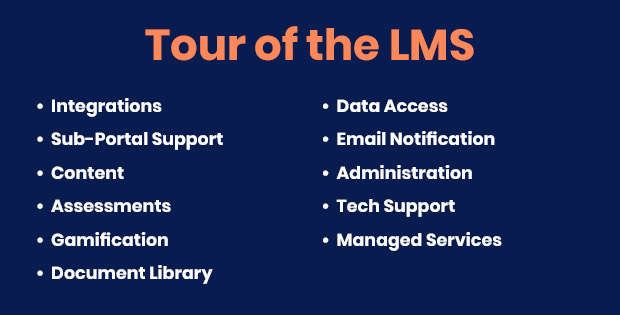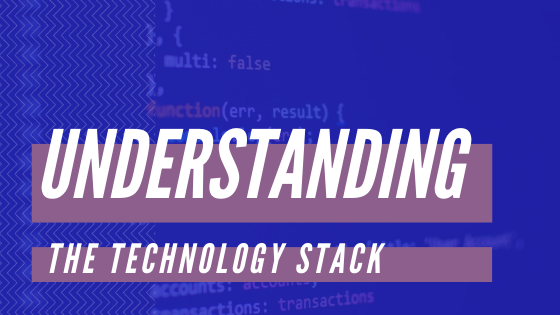Whether you’re working with representatives, brokers, agents, distributors, installers, buying groups, referral partners or value- added resellers, managing them is problematic. They don’t work for you so it’s not easy to count on them. They might rep for a number of companies, which means you will get only a slice of their mindshare. Even when you supply them with sales leads, they may not act in a timely fashion. And they’re likely to put a lot more energy into the sales where they’re making the most money, which means that if your relationship with them is just getting started or pays less than other deals, you’ll struggle to get their attention.
The largest operations may have 30 or 40 companies they represent. “At that point,” points out Kevin Brown, founder of sales and marketing advisory Sunwest Ventures, “it is an absolute chaotic landgrab to stay top of mind with those people.”
Currently, most organizations with a channel program use a combination of spreadsheet and email to oversee partners. The savvier ones also have access to customer relationship management software. Very few, according to Brown, have any documented processes or applications to do the important follow-up. Maybe that’s why 79 percent of marketing leads never convert into sales, according to MarketingSherpa. The most common cause of this poor performance? Lack of lead nurturing.
As a result, those companies that rely on a third-party for their sales success frequently miss out. These days, newer forms of technology can play a big role in helping you wrangle your channel partners and inspire them to better performance. Using the right kinds of software eliminates inefficient manual processes and helps you build a base from which to improve your channel program for the long term.

The Problem with How Leads are Currently Managed
For several years now the concept of “lead scoring” has dominated sales and marketing discussions, driven in large part by the Salesforce phenomenon. That’s where you gauge the likelihood of a sales prospect committing to a sale based on the various actions the prospect has taken—email opens, webinar registration, webinar attendance, taking a phone call and so on. The problem with lead scoring is that it’s highly subjective, says Brown. “One person will assign a 98 percent likelihood that a prospect will close into a sale based on those activities, another will say 65 percent and a third will give it 50 percent. There’s no rhyme or reason. It’s just what somebody decided to assign to the activity or the lead.”
His preference is to put the emphasis on following a process and taking the prospect through stages that are likely to get them ever-closer to the purchase.
Where does the automation of channel management fit? For Brown, that looks like this: The partner receives regular communications, detailing every lead provided to them (or that they’ve generated on their own), with status information that documents activities—phone calls, personal contacts, web meetings, etc.—and motivates them to follow up in a timely way.
Every time an activity is recorded, the system tracks that and ranks leads using a traffic signal indicator. Leads that have had activity within a certain number of days are designated as green lights; those with no activity for the longest period are set as red lights, and those in the middle are designated as yellow lights.
Perhaps weekly the channel partners receive a communication with a rundown on leads and their current status, to remind them about which ones need attention. And the company managing those partners would get visibility to the same information.
As Brown explains, “If I want to see how my representatives in the Midwest are doing, I can look at a report that shows me all of my lead statuses and the value of my leads, whether the lead is engaged with me through our marketing automation, and then how my reps and distributors are dealing with the leads. If I were that manufacturer, I might go through the report on Sunday night, sort it by revenue opportunity and see all the leads within a certain dollar range or a certain status. If I saw a $100,000 opportunity that nobody had called on in 45 days, I’d send out an email and tell that channel partner: ‘I’ll be calling you tomorrow morning at 8-o-clock to discuss this; please answer your phone.’”
The idea, says Brown, is to use the technology in the stack to gain “visibility and accountability.” The right software can also help you convert a lead to sales-ready, one that’s worth passing onto your channel partners.

Your Channel Partner Technology Stack
What’s in the stack? The largest companies may use partner relationship management (PRM) systems. These are akin to customer relationship management programs, but with some key differences. Obviously, a CRM maintains the data and manages the activities related to the customer. Leading companies use the CRM to better understand their customers, tighten their relationships through targeted communications and keep them happy with effective service and support so they’ll remain customers. The PRM performs the same function but caters to channel management—those external sales teams and the customers they have. As Gartner has reported, the PRM is “designed to improve an enterprise’s ability to market, sell and service end customers through channel partners… These applications consolidate data and transactions; set business rules and track activity; are typically used to manage channel partners, distributors, alliance or strategic partnerships; and often include a portal to enable bidirectional information flow and communications between partners.”
However, PRMs tend to be expensive tools that many mid-sized companies can’t afford. As a less costly alternative, applications have surfaced that provide a subset of the PRM functionality, specifically focused on the lead management process. For example, LeadSmart Technologies, the newest of these, has a single focus: to convert prospects into “sales-ready” leads—by handling many of the functions described above—tracking sales activities, reminding the channel partners to follow up in a timely way—and to give visibility and accountability to both sides, your company and your selling partners.
Most recently, the learning management system (LMS) has begun to play an important role in the channel partner management technology stack among manufacturers and other product segments. Traditionally, training for partners has been “extremely rudimentary,” says Brown. “Somebody makes a PowerPoint that’s approved by the marketing and sales and executive management, and that’s distributed for your reps to use.”
Brown believes there’s a link between the training that a partner undergoes and the success of their sales efforts. “There’s no question that somebody is going to talk more about something that they have a high level of confidence and understanding in,” he points out. The LMS plays a vital role in developing, delivering and overseeing that training. Also important: The data generated by the LMS will not only help you link learning with sales success but can tell you what learning is most effective for your various types of channel partners.

A Quick Tour of the Learning Management System for Channel Partners
While there are easily hundreds of LMSs available in the world, very few are relevant to the company that wants to optimize learning and training for its channel partners. Your company may even use an LMS specifically for employee training. But, as LMS expert John Leh has pointed out, the LMS designed for human resource compliance training won’t fit the needs of your external enterprise.
Let’s go through the critical functionality to consider during your evaluation of channel partner LMSs specifically.

Simple Integration
You want to make sure your LMS integrates with your CRM so that both systems can communicate seamlessly. But integration also needs to cover other enterprise software you rely on—whether those are programs to help you with marketing and social media (such as Microsoft Dynamics, HubSpot and SurveyMonkey), digital authentication (DocuSign), communication (Slack), webinar hosting (WebEx or On24) or other tools tied to content creation and curriculum development.
Support for Sub-Portals
Also called multi-tenancy, this feature gives you the ability to make sure each of your partners is exposed to the training resources most relevant to their needs and roles, without having to wade through unnecessary content.
Conquering Content
You’ll want to give learners the opportunity to learn in the mode they prefer—whether that’s watching a video, attending a pre- recorded presentation, reading a document, working through interactive activities or something else. Make sure your channel partner LMS lets you build and load multiple curriculum formats. Also, built-in authoring tools that are template-based will help you with rapid content development.
Adding Assessments
Learners tend to pay better attention when they know there’s going to a quiz at some point—especially if it’s tied to incentive programs for your channel partners. These assessments should be easy to build, highly interactive and quick to embed in content, whether that’s into a video, a slideshow, a document or some other kind of learning matter.
Gamification and Digital Badging
Elements such as leaderboards, flashcards and leveling up perk up engagement, boost retention and motivate your learners to persist by showing them how well they’re doing (including against others) and how far they have to go in reaching their goals. Digital badging, otherwise known as microcredentials or “certification lite” perform the same duty— letting your learners prove their mastery of your products and sharing their achievements with the world. Similarly, your LMS should be able to issue certificates the moment a learner has reached the latest learning goal.
Documentation and Marketing Collateral
Besides granting access to courses, the LMS can serve as the repository for marketing collateral, call guides, support documents, presentation materials, customizable emails and other resources your partners will need in the course of representing your products to potential customers. By making your LMS the center for outreach to your partner channel, you stay on top of their engagement with your company and its products.
Data Access
Each time learners interact with the LMS, the software tracks that progression, providing you with data on their growth and what types of training content and other resources they’re tapping into. You should be able to gain access to that data to better understand your channel partners and determine what will be most helpful to them as they advance in their familiarization of your products.
Email Notifications
You will want the ability to send “nag messages” or nudges to encourage your partners to enroll, spend time in and complete courses. This feature can be used to manage different types of channel partners.
Straightforward Administration
LMSs can be complicated to set up and use. Choose a program that lets you set up multiple profiles or learner roles easily so that you can target instructional content to people appropriately. Make sure the software enables you to load learning content quickly so you can stay current with changes in your product line and the training your channel partners will need.
Rock-solid Support
The company that you license your channel partner LMS from needs to have a track record of performance. After all, you need to count on them to help you get up to speed on the LMS and support your efforts to get courses up and running and keep them updated. That means they know how to ask the right questions to make sure your system works in ways that will help you meet your company’s goals.
Managed Services
Consider a company that provides services to help you administer the system. This includes those that can help you build out your product knowledge courses.
As you aspire to meet your sales goals through your external enterprise, technology will help you make sure your third-party reps are trained effectively and have the resources they need for success while giving you visibility into their engagement with your company.
Resources for more information:
LeadSmart Technologies, https://leadsmarttech.com/.
“Sales-Focused Partner Relationship Management (PRM).” Gartner. Undated. https://www.gartner.com/it-glossary/sales-focused-partner-relationship-management-prm.
Sunwest Ventures, http://www.sunwestventures.com/.


